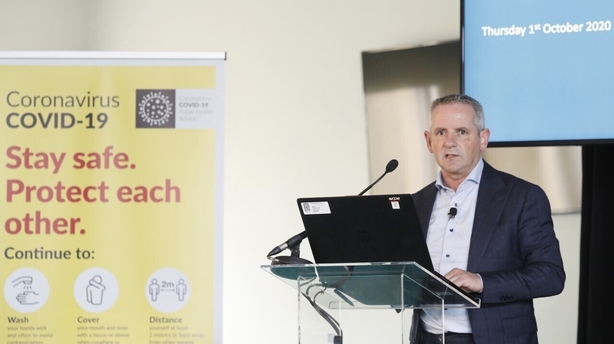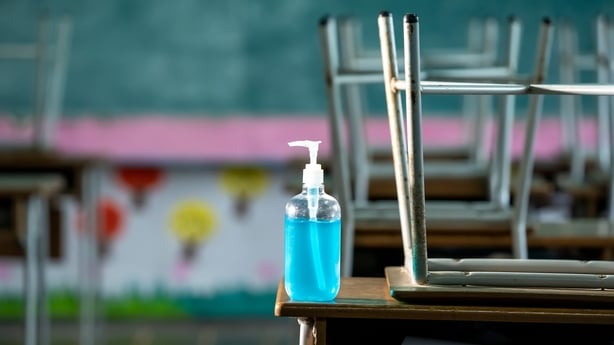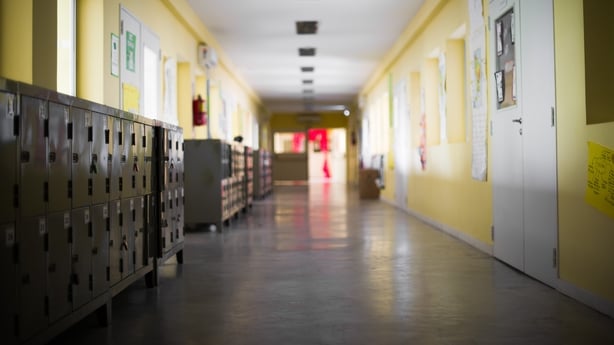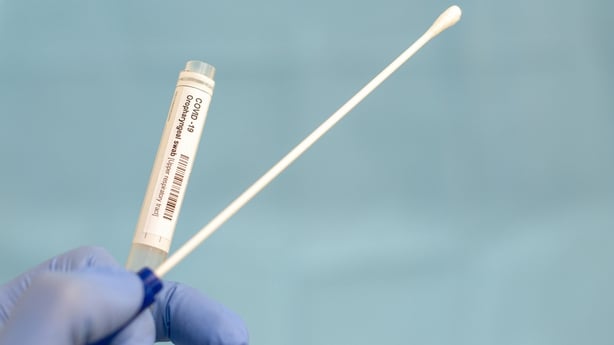At Thursday's HSE briefing, public health consultant Dr Abigail Collins acknowledged something that some school staff and parents have suspected of late: that when it comes to testing in schools, and who is or isn't regarded as a close contact, different rules apply.
Many teachers and others are greatly concerned that cases of Covid-19 are being missed as a result of a too-narrow measuring of what constitutes a class contact in a school setting. They worry that this could be endangering students and staff.
They are right about different rules applying. Dr Collins freely acknowledged on Thursday that public health officials are being deliberately conservative when it comes to who is deemed a close contact in a school setting. When it comes to public health, she explained, it's not just about Covid.
Talking us through a hypothetical school public health risk assessment, after a hypothetical child in a classroom is discovered to have the virus, she said there was a balance to be struck "between what is reasonable, with what is necessary".
On the one hand, Dr Collins said, they want to stop the virus, but on the other she spoke of a "very real understanding that school is a very important place".
"If you designate someone a close contact you are automatically excluding them from education (for 14 days) and exclusion is harmful and undesirable."
The harm that can ensue from school absence was dwelt on too by HSE Chief Executive Paul Reid. He cited the "very significant impact", a negative one, caused to children by the lengthy school closures earlier this year.

Beyond education and even beyond important school functions such as socialisation, Paul Reid spoke of the fact that one in five child welfare referrals to Tusla comes from schools.
Schools are "safe" places in more ways than one. There are things that the keen eye of a teacher - perhaps the only adult outside of their family that a child will interact with - will spot.
Going through the typical public health risk assessment process in a school in great detail, "you might determine that all of the class should be considered close contacts", Dr Collins said. But it was clear from the context that this was a step they would only take if deemed absolutely necessary.
Dr Collins' example centred on a hypothetical case involving pupils, but it can be extrapolated to teachers. If too many teachers are obliged to self-isolate for 14 days - and that is what happens once they are deemed a close contact - then clearly that too has implications for schools.
Some teachers and others complain that the approach seems to be to keep schools open "at all cost".
It's not quite that, but it seems close enough: "It is absolutely key that we do all in our power to keep schools open", Paul Reid said on Thursday.
Very many teachers and others working in schools agree with this. All this week and last, teacher trade union representatives asserted this again and again. 'We don't want to close schools', they said - even as ballots for strike action were being counted - 'we know how important it is for children and young people that schools remain open, but we want those facilities to be safe for their members'.
That is not an unreasonable demand.

I have received emails and phone calls from teachers who are understandably anxious for their safety in school. Most of those who have contacted me have been deemed 'high-risk' in health terms. This means that they have an underlying health condition which places them more at risk from the virus, but they are still obliged to attend for work. Only those deemed 'very high risk' have been allowed to remain at home.
One high-risk teacher was dismayed last week to discover that even though she had worked very closely with a child from Monday to Thursday, after that child tested positive for Covid on Saturday neither she nor any other teacher in the school was deemed a close contact. She writes that she was told that this was because she was wearing a mask at all times, and also because the child was asymptomatic.
She and at least two other staff members were so concerned that they arranged tests independently through their GPs. When she first wrote to me she was anxiously awaiting the results of that test. On Friday night she contacted me again, this time with good news: thankfully she tested negative, as did her two colleagues.
There have been other reports of school staff in similar circumstances, whose private tests returned positive results.
But HSE officials asserted on Thursday that the evidence from the past two months was "very reassuring". Schools are safe places they said, they are not incubators or exacerbators of the virus. The data supports them.
Of those tested in schools - and remember, only strictly close contacts are being tested - just 2-3% are testing positive. This is a very encouraging outcome. It shows low transmission rates in schools. It compares to a rate of 10% for detection of the virus among close contacts in the community. (Both sets of figures are directly comparable, because both deal only with close contacts, both excluding the "index" or original case.)

'But transmission rates are only low because they are not casting the net wide enough!', critics say.
But think that through for a moment.
The HSE is talking about rates, not numbers; percentages of those tested.
If many more children or staff in a class were to be tested - beyond the few deemed close contacts - the number of cases diagnosed as positive could well go up, but it is highly unlikely that the proportion or the percentage would. The wider you cast the net, the lower the proportion of positives you will get.
That's not to say that more people shouldn't be tested in schools. In an article in Friday's Irish Times, Professor of Comparative Immunology Dr Cliona O'Farrelly of Trinity College argued for vastly more testing, in settings such as schools, as part of a suite of measures if we are to manage to co-exist with the virus and live anywhere near normal lives again in the near future. We need "to see where the virus is and who it is being passed on to", she wrote. There is a rationale to that. But it is a different argument.
At Thursday's HSE briefing officials paid tribute to teachers and other school staff. It is because of the hard work and sacrifice of teachers, of SNAs, and of students too that transmission rates have stayed thus far so low. And it is a sacrifice.
A first-year student shrugs as he tells me for him secondary school means "masks and hand sanitisers". A secondary school principal tells me the effects of mask wearing are "sad": "Student's don't ask questions", she says. "Humour is lost behind the masks".
But primary schools say pupils are "oblivious". Some say too that the increased separation has brought about a new calmness to schoolyards and corridors that suits some children.
All of these teachers, and that first-year student, are desperately keen for schools to remain open.
Teachers and SNAs are fighting to ensure that turnaround times for testing is vastly improved. They also want more testing in schools, and they want more supports for teachers in the high-risk category.

They are now acknowledged as part of the Covid frontline and as frontline workers they say these measures are necessary if schools are to be safe.
The HSE says it has been working to strengthen its school teams, and to provide a better service to schools.
One other big challenge is looming; as winter sets in the issue of ventilation in schools will become key.
Airborne particles of the virus accumulate in badly ventilated spaces, and the danger of transmission grows.
"I'm a big fan of open windows", says Dr Abigail Collins who acknowledges that ventilation is not her area of expertise. Schools are already encouraging students to keep their coats on, but the real challenges in this regard have yet to begin.
Speaking of the first half-term under Covid - this September and October - Dr Collins says "that experience has reinforced to us that schools are safe places for our children to be".
"We very much want that to continue", she adds.
As schools reopen on Monday, round two of their battle against the virus will begin.







